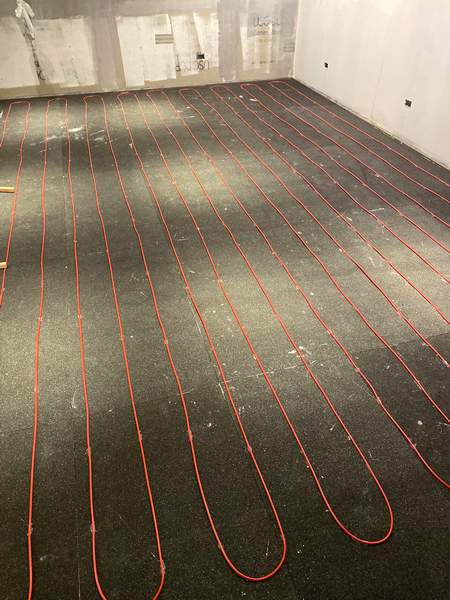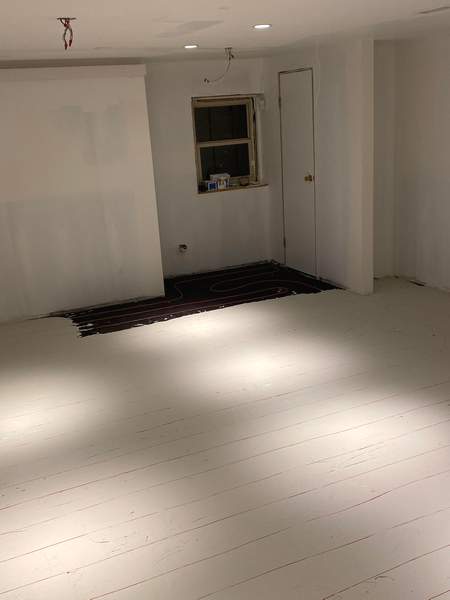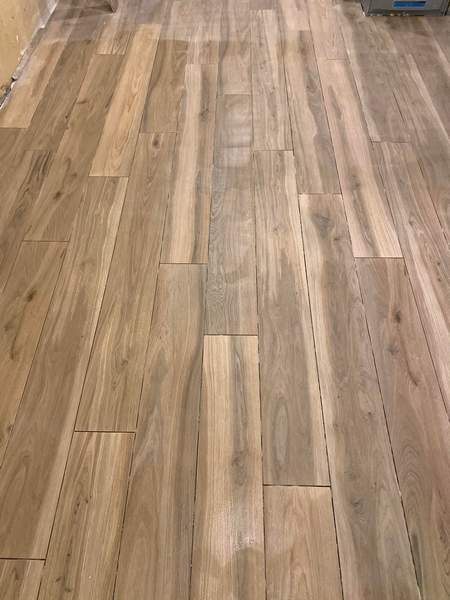Several homeowners are gravitating towards the concept of floor heating or radiant floor heating. Likewise, it is increasingly prominent among renovations centering on clean, comfortable, design-led living. In addition to being a significant upgrade to the conventional radiators, warming your house through underfloor heating comes with more coziness. However, stress and high costs remain sources of concern for homeowners.
If you are still undecided on which to go for, this blog post is for you. Join us as we take a look at the pros and cons of radiant floor heating.
Advantages
- Easy to install
- Simple to run
- More design flexibility
- Compatible with all floor coverings
- More energy efficient
- Offers comfort and safety
Disadvantages
- High installation costs
- Floor height problems
- Longer installation periods
Why you should consider Radiant Floor Heating
-
It is easy to install
You will be surprised at how easy it is to install an underfloor heating system. It is even easier if it comes under a building or renovation project. Most of the radiant floor heating solutions can be installed as a DIY task. The layout is ready out of the box, with the electric wire pre-spaced and linked to the mesh already. All you need to do is roll it out in place. Cleaning is straightforward, and you can keep the rooms dust-free; after all, the deeper parts of the radiators are not exposed.
-
It is simple to run
In addition to an average 30-year warranty that comes with most of these systems, they hardly require maintenance. The heating controllers are designed to offer a hitch-free functioning, whether you are using a programmable thermostat or an automatic Smart WiFi Thermostat. Either way, you can set up the operation to suit your preferences.
-
It offers more design flexibility
Radiant floor heating offers great freedom on how you plan your room space. Since radiators are not fixed on the walls, you get to decorate your space to suit your preferences – whether a minimalistic feel or an elaborate design.
-
It is compatible with all floor coverings
This also contributes to even more design freedom. Apart from the wall, you also get to do whatever you want with the floor space. The heating system does not restrict you to a particular floor type. So, you can choose tile, wood, carpet, laminate, stone, or other floor types, depending on your preferences.
-
It is more energy efficient
Radiant floor heating systems are of two kinds – the water-based systems and the electric systems. Whichever you decide to go for, you get a consistently and efficiently heated room. However, they work in slightly different ways.
Electric underfloor heating systems heat the underground wiring to produce heat, while the warm water systems run hot water via underground pipes to create heat. If you use traditional radiators to create heat, they must run at a relatively high temperature, say 149-167 degrees Fahrenheit or 65-75 degrees Celsius, to achieve consistent heating. Conversely, floor heating systems can work efficiently at a temperature of 84 degrees Fahrenheit or 29 degrees Celsius or less, depending on the floor type. Irrespective of the floor finish, you expend less energy warming your room. This, in turn, minimizes your energy bills.
Likewise, radiators work by heating the air surrounding them first. Hence, you will likely find “cold spots” in rooms heated by radiators. Subsequently, the air feels very hot in areas close to the radiators and relatively cooler in the middle of the room. The usual fix is to open a window right above the radiator to let in some fresh air. While this works, it allows all the radiator-generated energy to escape into the atmosphere through the window.
Radiant heat systems, on the other hand, warms up the room from the floor and gradually covers every part of the room. There are no cold spots or stuffiness in the heated parts. The on-the-wall thermostat found in underfloor heating prevents overheating or the irregular heat distribution that comes with the conventional radiators.
So, you save about 15% on heating bills when you use radiant floor heating systems to warm your room.
-
It offers comfort and safety
An underfloor heating system eliminates concerns over sharp edges or hot sources of radiators, which could be dangerous to younger family members. The heating system is designed to regulate the temperature of the radiators so that they do not get too hot to touch. Plus, they are usually invisible.
Also, if you warm a room via radiant heat systems, the air quality is always better. The fresh and oxygen-rich air is way better, compared to the hot, oxygen-deficient air that comes from the traditional radiator. In a traditional radiator heating system, there is a thermal circulation from air rising to the ceiling and back, taking all the dust with it in a circular motion. This does not happen in the case of a floor heating system.
Why you should NOT consider Radiant Floor Heating
-
High installation costs
On average, you will spend between $10-$20 to install a radiant floor heating system successfully. The exact installation cost depends on the system type and your room size. Likewise, you will require the services of an expert electrician to link the system to your power supply. This is even more expensive and takes more time – about $200-$250 – depending on your neighborhood and the electrician in question.
So, it is safe to say that you will be spending about $500 as additional costs on the electrician and total labor costs to get the system up and running.
For water-based systems, the installation and incorporation are parts of the build phase of the construction or renovation project. Either way, you will spend twice or thrice the installation costs for an electric system on a water-based radiant heating system.
-
Floor height problems
About ½ inch is added to the floor height of a room where a floor heating system is installed. This may vary depending on your preferred system type. Likewise, underground insulation boards usually come into play to ensure the upward (and not downwards or sideways) movement of the heat generated. Insulation boards maximize efficiency potential, but it also increases the height by about 1 inch.
If you do not want to lose height in your room, you should go for underfloor heating systems with very thin cabling attached to the mesh. These types hardly add to the floor height.
-
Longer installation periods
During the installation phase, you will need to apply a self-leveling compound on the electric underfloor heating system. This compound must dry up before you can proceed, and this means a longer waiting time – perhaps one or two days. The waiting time is even longer in water-based underfloor heating systems – about a week. However, the time is factored into the overall time required for the renovation or construction project. So, it is not usually an issue.
Conclusion: Should you buy an underfloor heating system?
There is no doubt about the convenience and energy efficiency you get when you warm your house with underfloor heating systems. The installation costs are expensive, compared to the traditional radiators. However, there are multiple options to choose from, depending on your budget. Although it may appear costly at the moment, underfloor heating systems help to save costs on energy bills in the long run.
If you are going to undertake a bathroom remodeling project soon, you should consider radiant floor heating. You spend way less on labor costs if the remodeling involves lifting and changing the flooring. The resulting comfort and the cost savings of running a radiant heating system are long-term advantages that make every penny spent worth it.
For more information on how https://www.majestictiles.com can help you, please visit our contact form or contact us.
Phones:
Lucas: 773 987 5994
Peter: 847 778 2445








